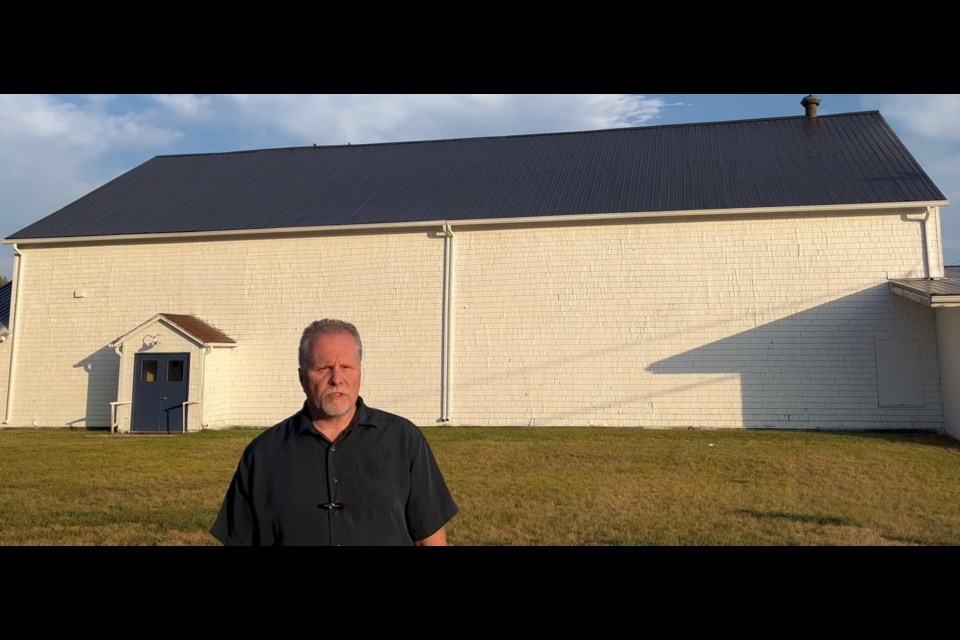Historian Joel From has teamed up with a British researcher to re-create the Caron airbase in a computer program to honour the latter’s father, who trained there during the Second World War.
Thomas Henry (Tommy) Turner and nearly 2,000 other British airmen trained at No. 33 Elementary Flight Training School (EFTS), which operated from January 1942 to January 1944 as part of the British Commonwealth Air Training Plan (BCATP) and produced flyers for the Royal Air Force (RAF).
Turner learned there from Oct. 1 to Dec. 11, 1943, before subsequently training at No. 41 Service Flying Training School (SFTS) in Weyburn on Avro Ansons.
After graduating, the flight sergeant sailed back to England and flew with 582 Pathfinder Squadron. He survived the war and died in 1994 at age 71.
Turner’s son, Neil, retired a few years ago and began researching his father’s military life, which led him to the Caron airbase, From explained. He also had a side interest in computer flight simulators, specifically XPlane.
“He learned the program and found that it has these quite remarkable building modelling capacities within it, so Neil put together a small team of some other guys who had worked in that XPlane simulator environment,” the historian continued.
“And he was committed to producing an exact replica of this airbase here at Caron.”
It took Turner nearly two years to complete the project. He reached out to From for help because the Briercest College professor had written a book in 2019 called “In Plain Site: A Biography of the RAF Airbase at Caron, Saskatchewan,” which focuses on the training centre’s complete lifespan.
The professor had acquired a trove of information — pictures and blueprints — during his research, and with that knowledge, he helped Turner’s team re-create each building exactly in the computer program while Turner added historic planes that could fly over the venue.
From enjoyed working with Turner, saying the man was well organized and knowledgeable. Moreover, they sent each other about 150 emails as they designed each building.
“He (Turner) was the driving force behind it. I was just the consultant,” the professor said.
In the end, the virtual base’s footprint was “dead-on accurate,” while From thought it was impressive to see the venue as it functioned during the war.
Today, only 10 buildings from the original airbase exist.
While hobbyists have re-created other military bases in computer simulators, From believes this project is the first one — of which he knows — to re-create a historic, detailed Canadian base from the Second World War.
“I think it’s a tremendous (accomplishment). And it gives you a sense of what these bases look like,” he said, noting with a laugh, “It wasn’t hard to model the surrounding terrain around Caron. That prairie stuff is pretty easy.”
Turner finished the 30-minute video about three months ago and released it on YouTube. Meanwhile, people who own the XPlane simulator can download the airbase map for free and fly — or walk — around it.
Furthermore, the team has made the video available for free to museums so they can run it regularly on their in-house TVs.
The reaction has been positive, especially from former Briercrest College students, who have reposted the video to social media. Furthermore, many people in the computer simulation community also appreciate it because of how unique the project was and how accurate the buildings are.
“People were impressed that Turner embedded photos in the actual locations (where they were taken). That’s a bit unique for this type of thing … ,” said From.
While From wrote a book about the airbase, it was Turner who did most of the research and structuring for the script. He then had the professor — who tweaked the script for accuracy — perform the video’s voiceover.
“I wasn’t thinking I would be doing that, but he wanted a Canadian-sounding voice rather than his English accent,” From laughed. “I actually think most Canadians would think the English accent is more charming than ours.”
The professor added that he is available to speak to groups about his book and the former airbase. His website is www.caronairbase.com.




